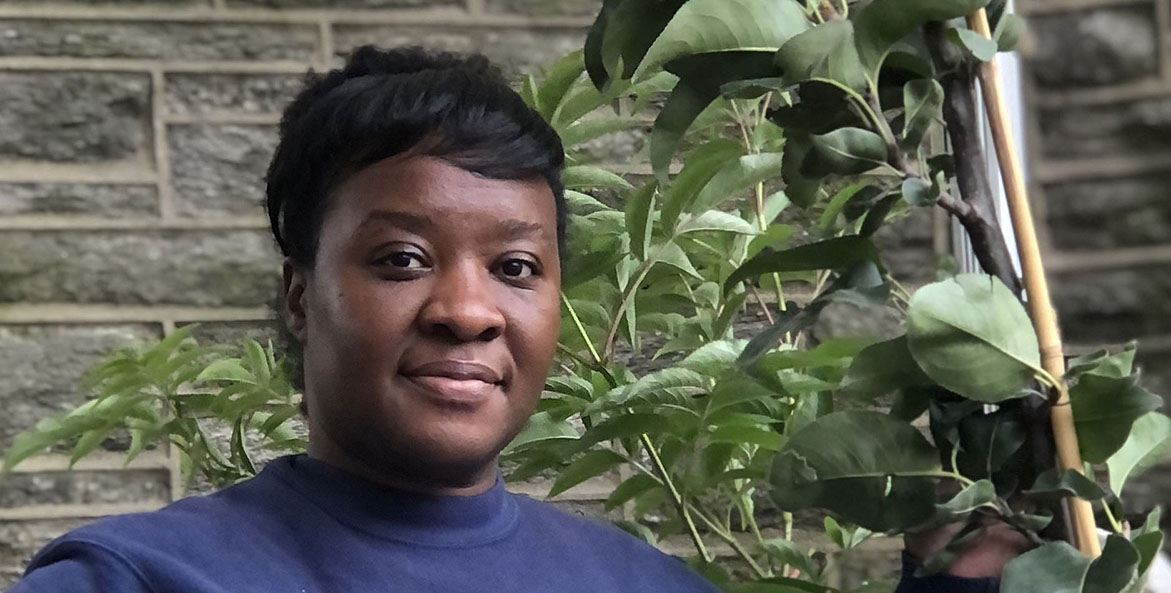In Philadelphia, better health grows on trees thanks to Kiasha Huling's work with UC Green.
Under Kiasha Huling's stewardship, the non-profit group UC Green, along with 650 volunteers, and more than 1,200 residents have planted 5,000 trees, putting west and southwest Philadelphia neighborhoods on the path to wellness, safety, and social cohesion.
Huling has a master's degree in social work and focuses on medical social work and public health. For her conservation and community building work, Huling was presented a Mira Lloyd Dock Partnership Diversity Award, by the Keystone 10 Million Trees Partnership, coordinated by CBF. Shauna Yorty of Lancaster also received the award.
Neighborhoods like Cobbs Creek in the City of Brotherly Love can be hotter than sections of the same city because they lack shade and have a high density of roads, buildings, and hard surfaces. The conditions produce a "heat island" effect that can be fatal.
A survey in west Philadelphia showed higher instances of asthma among children and higher instances of seniors reporting to emergency rooms for heat-related illness in summer months. We sat down with Huling to better understand the connection between physical health events such as these and trees.
How do trees ease the heat island effect?
The design of row homes was to have front and back windows. On hot days you should be able to not have any lights on, open up your blinds and windows, and get a nice breeze in. Living in a row home, you are nestled between two homes, so you shared the cost of heating and these window breezeways provided cooling. With trees gone, you lose that. Long-time residents who knew how to stay cool, because of the loss of canopy were finding themselves over-exerted in their homes and having to receive emergency care.
Are trees a prescription for better health?
If your doctor tells you, you can manage your pre-diabetes by being more active, it would seem to be more appealing to go for a walk around the block, if you had a nice, shady block.
Why plant trees in the city sidewalk?
Most folks [have] cement from their homes to the curb. For neighborhoods, it is a part of place-making. [A family] plants a tree the year that they had their first child so the tree and child can grow up together. As new residents, you decide what color you want to paint your living room and you decide if you want an Eastern redbud or a maple outside.
Is Philadelphia developing a tree plan?
It [has] a map and pathway for equitable greening over the next decade to increase the canopy by 20 percent. It will look at how trees are distributed, and barriers to tree planting. What communities have been neglected. We will get to some shared responsibilities about the care of trees, like cracked sidewalks, infrastructure like plumbing and utility lines. and all those things that may result in the decline of trees or barriers to planting them.
Does UC Green address environmental justice?
We've been looking at it from the perspective of equity. What are things that need to happen to create a balance in greening? The sharing of resources, the sharing of social connections. If a barrier for planting a tree is an old oak tree stump, and the city won't approve the permit because the stump needs to be removed, some neighbors are left to hire landscaping firms to remove the stump. That may be a cost burden, and the tree doesn't get planted. That kind of reliance on shared resources and fostering equity between those that have the knowledge or skillset and of course financial capital, sharing that as one community is what we have centered ourselves in.
Is your work rewarding?
I plant trees alongside neighbors and their stories and memories of how connected they are. Starting conversations around trees does wonders for the social cohesion and the connectedness in our neighborhoods and that is essential to our neighborhoods thriving.




